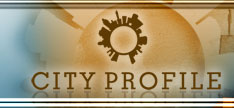The First Bank of the United States is an iconic structure in Philadelphia?s cityscape located within Independence National Historical Park which houses several other historical structures which lead to the independence of the United States such as Independence Hall and Carpenter?s Hall.
At the early stages of the United States as a free country, its growth and prosperity was inhibited by the absence of a stable financial backbone. United States back then was having a hard time coping with the huge debts it incurred during the Revolutionary War. Also, there were many currencies being used in the country that time. Back then, there were only three banks in all of United States but there were over 50 currencies being circulated: scrip issue by big businesses, cities, states, Spanish, Portuguese, French and English bills and coinage.
In order to create a stronger financial environment for the United States with a strong currency, Alexander Hamilton, the first Secretary of Treasury who served from 1789-1795 proposed the establishment of a federal bank. He brought up the idea to the President and the Congress. The First Bank of the United States was finally created by a charter enacted by the United States Congress date February 25, 1971. It was established in Philadelphia when the city served as the nation?s capital from 1790 ? 1800. There were only 13 states back then, each with their own currency.
The original location of the First Bank of the United States was in Carpenter?s Hall. However, the notable landmark is the structure found in 3rd and Chestnut Streets which was finished in 1797. The building is a perfect model of the Classical of the Revival-style design. The blueprint of the building was conceptualized by homegrown Philadelphia architect Samuel Blodget Jr. The size of the structure is significantly bigger than the other building built during the same time. Blodget intentionally did this so the structure would convey an image of power and stability. The design of the bank also took after the structures found in Ancient Greece to pay homage to their democratic rules and the civilization?s architectural magnificence.
As of the moment, access inside the First Bank of the United States is not possible. Nevertheless, the exterior of the building alone provides visitors with so much to see. The fa?ade of the building resemble the Parthenon in Greece. It its embellished with oak branch, bountiful mahoganies and an imposing eagle sculpted on the pediment carved by Clodius F. Legrand in 1797.
The First Bank of the United States was officially designated as a National Historic Landmark in 1987.
| First Bank of the United States Videos |  Add Video Add Video |
| |



